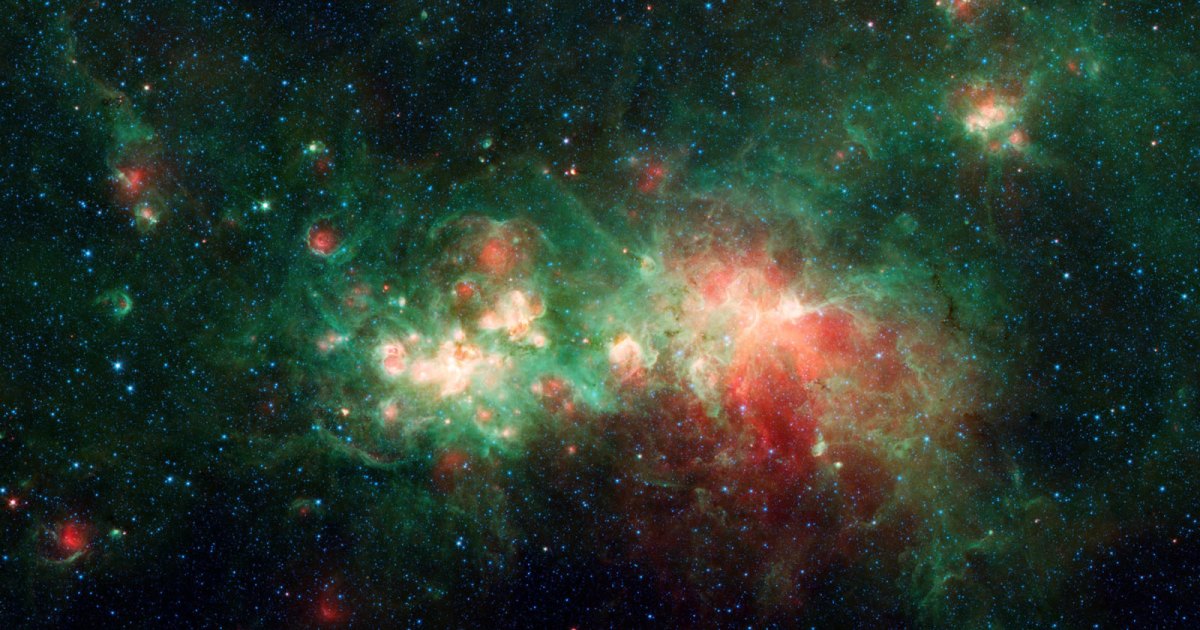Every culture has a story about the apocalypse: the end of time. In Norse mythology, the world will end in a battle called the “Epic Battle.” Ragnarok, fighting the gods against the ice giants. In Christian legend, the Book of Revelation states that the final battle will take place at Armageddon. Even modern science has its own story, in which the repulsive gravitational pull of an ephemeral energy field called dark energy pushes galaxies apart in the universe until they are no longer visible in the Milky Way. While this model is widely accepted in the scientific community, recent media reports indicate that scientists are reconsidering their predictions.
However, these stories are premature. Indeed, the Dark Energy Spectroradiometer (DESI), a collaboration of astronomers, recently released very precise measurements of dark energy and its evolution over time. But understanding the true significance of recent publications requires caution.
expanding universe
Astronomers have known for nearly a century that the universe is expanding. For decades, it has been thought that the gravitational influence of galaxies in the universe is slowing the expansion. But that all changed in 1998, when two groups of astronomers determined that the expansion of the universe was not slowing down, but accelerating. Over the next quarter century, many measurements confirmed this observation, and astronomers finally settled on an explanation.
The explanation is that the universe is filled with energy fields of constant energy density. This energy field is called dark energy, and the constant form of dark energy is called the cosmological constant. Prior to the recent DESI announcement, all previous measurements were consistent with the cosmological constant. However, dark energy’s constancy is not certain; some dark energy models predict that it will change over time. These variations of dark matter are called quintessence.
If dark energy becomes smaller, the slowing effects of ordinary gravity may again dominate, potentially leading to a scenario commonly known as the “Big Crunch,” in which the universe collapses on itself. Conversely, if dark energy becomes larger, its repulsive effects could eventually tear apart individual galaxies, solar systems, and in extreme cases even atoms. If dark energy becomes larger, the distant future universe could be made up of single subatomic particles separated by cosmic distances. The universe of the future may be very different from our current one.
To determine whether dark energy is indeed constant, what astronomers need to do is measure the expansion rate of the universe over time. The DESI experiment uses the 4-meter Mayall Telescope at Kitt Peak, Arizona, to image distant galaxies and determine their speed relative to Earth. Due to the limited speed of light, these observations can capture images of galaxies from 11 billion years ago to the present. By measuring the velocities of galaxies at different distances from Earth, they can determine how these velocities change over time.
DESI plans to observe for five years. It started operations in 2019. In a series of papers, they claim to have:
- Created the largest and most accurate map of the structure of the universe over the past 11 billion years.
- The expansion history from 800 million years ago to 11 billion years ago was measured with less than 1% accuracy.
- Exceeds the combined accuracy of all previous measurements.
Press releases and publications from the DESI experiment claim that their data are consistent with the popular theory of dark energy, which states that dark energy is constant. However, when the DESI data are combined with other (earlier) data and the ensemble is compared to various theories, a model of dark energy changing over time fits the data better. In this case, dark energy has slowly become smaller.
Reconciling constant and dynamic dark energy models
So, which one is correct? This is where things get tricky. The correct answer is “both,” and the explanation comes from statistics. In discovery science, predictions and measurements are rarely exactly the same. After all, measurements have inherent uncertainties arising from imperfections in experimental equipment, and many predictions contain approximations that make the predictions imprecise. For example, suppose a quantity is predicted to be 1 and measured to be 2 ± 0.9. According to the simplest explanation, the measured value is between 1.1 and 2.9, which is different from the prediction.
However, the difference between the predicted and measured ranges of possible values is very small, so it would be rash to say that the two are inconsistent. On the other hand, if the predictions are the same and the measurement is 6 ± 0.9, then the range of possible measurements (5.1 to 6.9) is large enough that it is reasonable to unequivocally state that the measurement and prediction are different.
In terms of recent DESI measurements, predictions and measurements (using single-year DESI observations) are very close, but there are small differences between the two. This difference helps change the picture of dark energy.
What’s next? The DESI experiment has recorded several years of data and will eventually release an analysis of three years of observations, followed by five years of observations. If the small discrepancy between predictions and theory does exist, future analyzes will confirm this.
It is assumed that precise measurements of future DESI data confirm that dark energy is changing with time. In this case, it would be a very important observation – it would revolutionize our understanding of cosmology. For now, however, future data analyzes could still confirm the idea that dark energy is constant. Unfortunately, it will be at least a year before we know more about this situation.
#Great #Crisis #dark #energy #data #raises #questions #fate #universe
Image Source : bigthink.com
